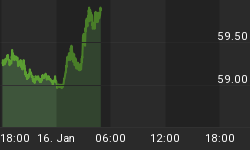The present day market has numerous similarities to the period just prior to a 10.5% drop in the S&P 500 that occurred last spring. In this article, we describe what we'll be watching in the days ahead to manage risk and reward.

Slowing Growth, No Resolution in Spain
Below are the five fundamental drivers we outlined on September 24 that could spark a stock market correction:
- Spain may choose to delay a formal request for aid.
- An increasing demand for safe-haven assets.
- Global growth is slowing.
- Earnings may disappoint.
- The approaching 'fiscal cliff'.
Four weeks later, the S&P 500 sits 40 points below the intraday high made on September 14. Over the last four weeks, little progress has been made in Spain, tepid global growth figures have continued to surface, earnings have been weak, and Washington has been "doing something close to nothing" in terms of the rapidly approaching fiscal cliff.
In the October 19 video below, we outline numerous things to watch in the coming days and weeks, including:
- S&P 500 areas of possible support (see 02:25 mark)
- The importance of weekly RSI (04:15)
- What a correction looks like (04:38)
- What the bullish Promised Land looks like (06:55)
- What the bearish Promised Land looks like (08:55)
- Probabilistic lines in the sand (19:45)
The charts below look busy and complex. The concepts are easy to understand if we break the information down into smaller chunks. Experienced pros will tell you market breadth can provide early warning signs for investors. What is breadth signaling now? "Be careful." The main portion of the chart below shows the percent of stocks in the S&P 500 above their 200-day moving average (MA). When a high percentage of stocks are above their 200-day, a rally has broad participation and tends to be healthy. When fewer and fewer stocks can hold above their 200-day, it is indicative of narrowing market breadth and a concerning development for the bulls. Point C below shows fewer and fewer stocks above their 200-day MAs last spring. Point A highlights the weak performance in the S&P 500 after breadth deteriorated. Point B shows RSI dropping below 50; RSI closed at 50 on Monday, which means another bearish alarm could occur this week. MACD, a widely used indicator, experienced a "bearish cross" above point D. Notice how stocks dropped below point A after the bearish MACD cross. In the present day, MACD is trying to complete a bearish cross again.

Just as market breadth is waving red flags, the performance of stocks relative to bonds closed Monday at a vulnerable level. The center of the chart below shows the ratio of stocks to bonds. When the ratio rises, stocks are in favor relative to bonds (a.k.a. risk-on). When the ratio falls, bonds are in demand relative to stocks (risk-off). The blue arrows at the top highlight waning bullish momentum. The red-dotted line represents an important bull-bear demarcation line. Notice when the stock/bond ratio dropped below the red line in 2011 (see A1) a sharp decline in stocks followed (see A2). The same bearish outcomes occurred in 2012 (see B1 and B2). Unfortunately for the bulls, the ratio is again staggering below the red line. If you are bullish, you would like to see the ratio break into the white space near point D. If you are a bear, you want a move below the blue support lines (toward point C).

Since the previous two charts are weekly charts, signals become more meaningful if they carry into the end of the week.
56% of Companies Miss On Revenue
In the long-run, corporate earnings are what drive stock prices. According to Bloomberg, thus far in earnings season revenue figures have been on the light.
Of the 127 companies in the benchmark index that have reported quarterly results since Oct. 9, 72 posted revenue that missed analyst estimates, while 55 exceeded them.
Hedges Still Attractive
We have not seen enough deterioration to make a full dash for the exits, but we have seen enough to have three hedges in place; VXX, a VIX-like ETF, PSQ (inverse technology), and SH (inverse S&P 500). If the CCM Market Models begin to stabilize and markets can hold near support, we will gladly remove our downside insurance. For now, we are content with a large cash position and some hedged long exposure.
















